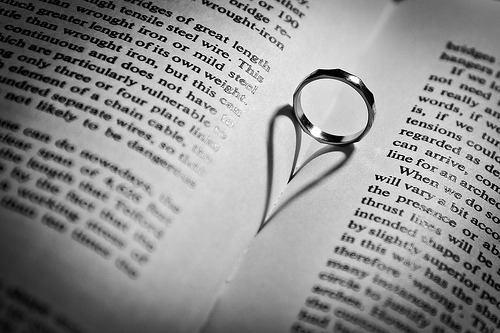
Iron-Ringing Strengthens Traditions and Bonds Among Canada’s Engineers
by Shubha Bala, associate producer
For five years I’ve been anticipating the day when I would get to iron-ring my cousin — a tradition bestowed on me by my older brother when I graduated from the University of Toronto, and on him by his older cousin when he graduated college. In 1925, six engineers at a university in Montreal performed the first Ritual Calling of an Engineer. Herbert Haultain, a engineering professor at the University of Toronto, conceived of the idea of a ceremony because he “felt that an organization was needed to bind all members of the engineering profession in Canada more closely together. He also felt that an obligation or statement of ethics to which a young graduate in engineering could subscribe should be developed.”
Haultain recruited Rudyard Kipling, then living in Canada and already known for his respect of engineers, to design the ceremony and oath, the details of which remain shrouded in secrecy. Kipling later said of his creation:
“The Ritual of the Calling of an Engineer has been instituted with
the simple end of directing the newly qualified engineer toward a
consciousness of the profession and its social significance and
indicating to the more experienced engineer their responsibilities
in welcoming and supporting the newer engineers when they are ready to enter the profession.”Since then, new engineering graduates have performed this ceremony in schools all over Canada, and Canadian engineers all over the world have been spotted by the iron rings on our pinkies. The importance of this ceremony, I recently realized, is not in the oath as much as it is in the community that is forged through this unchanging ritual.
On February 5, I went to the University of Waterloo as my cousin’s “temporary warden”. We temporary wardens get the special job of giving our loved ones their iron rings. It’s primarily sisters and brothers ringing younger siblings, parents ringing kids, and one special warden, who himself participated in the ceremony in the 1950s, ringing his grandson.
The obligation ceremony is short, and the details kept secret out of respect for the tradition. About 200 students and a handful of guests took our seats in the auditorium. We were the last of six groups of engineers to participate in the ceremony this year.
It opened with an enacted dialogue, symbolically acknowledging how new engineers must be humble and aware of their lack of knowledge — their learning begins now. The warden hosting the ceremony read a passage from the Bible.
Next, the new students read aloud their iron ring obligation. I turned to my cousin and placed the iron ring on my cousin’s right pinky, her working hand. For her, for many of us, this was a bigger moment than graduation itself.
Now, as obligated engineers, we listened to a recitation of Rudyard Kipling’s poem “The Sons of Martha,” which is based on the biblical characters Martha and Mary. As engineers, he describes, we have chosen a life of serving others.
The ceremony, written in the early 1900s, is full of Christian (and male) references. And it is written with an assumption that engineering is only composed of physical disciplines. Although this isn’t without controversy, I felt that it was precisely this ritual, left in tact, that connects people with the community of Canadian engineers. Other older engineers I spoke to said that the ring itself, while an important symbol, didn’t mean that much to them during their career. But the ceremony was an important tradition. After all, how often do you get to participate in something that people 80 years ago recited in the same way, word for word?
About the image: a new iron ring is displayed on an engineering text book (photo: Elisa Prajogo).
That’ll be me one day, no matter what.

